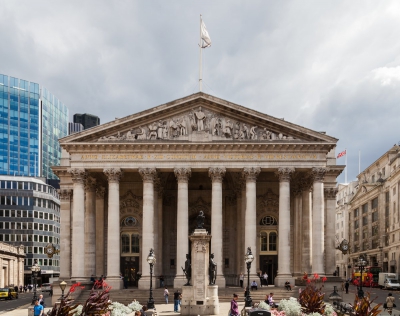The Great Fire of London was a major conflagration that swept through the central parts of London from Sunday, 2 September to Thursday, 6 September 1666. The fire gutted the medieval City of London inside the old Roman city wall. The death toll is generally thought to have been relatively small, although some historians have challenged this belief.The fire started in a bakery shortly after midnight on Sunday, 2 September, and spread rapidly. The use of the major firefighting technique of the time, the creation of firebreaks by means of demolition, was critically delayed due to the indecisiveness of the Lord Mayor, Sir Thomas Bloodworth. By the time large-scale demolitions were ordered on Sunday night, the wind had already fanned the bakery fire into a firestorm which defeated such measures. The fire pushed north on Monday into the heart of the City. Order in the streets broke down as rumours arose of suspicious foreigners setting fires. The fears of the homeless focused on the French and Dutch, England's enemies in the ongoing Second Anglo-Dutch War; these substantial immigrant groups became victims of street violence. On Tuesday, the fire spread over nearly the whole City, destroying St Paul's Cathedral and leaping the River Fleet to threaten Charles II's court at Whitehall. Coordinated firefighting efforts were simultaneously getting underway. The battle to put out the fire is considered to have been won by two key factors: the strong east wind dropped, and the Tower of London garrison used gunpowder to create effective firebreaks, halting further spread eastward.
The social and economic problems created by the disaster were overwhelming. Flight from London and settlement elsewhere were strongly encouraged by Charles II, who feared a London rebellion amongst the dispossessed refugees. Various schemes for rebuilding the city were proposed, some of them very radical. After the fire, London was reconstructed on essentially the same medieval street plan which still exists today.
The Royal Exchange in London was founded in the 16th century by the merchant Sir Thomas Gresham on the suggestion of his factor Richard Clough to act as a centre of commerce for the City of London. The site was provided by the City of London Corporation and the Worshipful Company of Mercers, who still jointly own the freehold. It is trapezoidal in shape and is flanked by Cornhill and Threadneedle Street, which converge at Bank junction in the heart of the city. It lies in the ward of Cornhill.
It has twice been destroyed by fire and subsequently rebuilt. The present building was designed by Sir William Tite in the 1840s. The site was notably occupied by the Lloyd's insurance market for nearly 150 years. Today the Royal Exchange contains Fortnum & Mason The Bar & Restaurant, luxury shops, and offices.
Traditionally, the steps of the Royal Exchange are the place where certain royal proclamations (such as the dissolution of parliament) are read out by either a herald or a crier. Following the death or abdication of a monarch and the confirmation of the next monarch's accession to the throne by the Accession Council, the Royal Exchange Building is one of the locations where a herald proclaims the new monarch's reign to the public.

1666Sep, 3
The Royal Exchange burns down in the Great Fire of London.
Choose Another Date
Events on 1666
- 19Aug
Holmes's Bonfire
Second Anglo-Dutch War: Rear Admiral Robert Holmes leads a raid on the Dutch island of Terschelling, destroying 150 merchant ships, an act later known as "Holmes's Bonfire". - 3Sep
Great Fire of London
The Royal Exchange burns down in the Great Fire of London. - 28Nov
Battle of Rullion Green
At least 3,000 men of the Royal Scots Army led by Tam Dalyell of the Binns defeat about 900 Covenanter rebels in the Battle of Rullion Green.

 English
English  español
español  français
français  português
português  русский
русский  العربية
العربية  简体中文
简体中文 